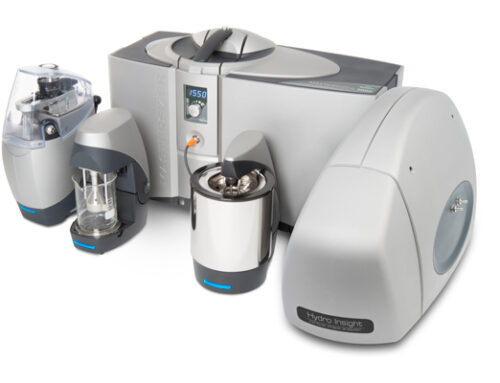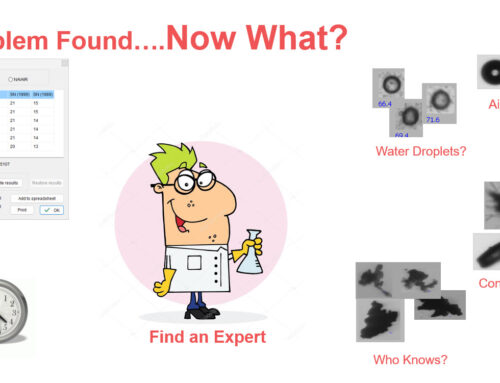Particle Counting as never SEEN before!
Dynamic image analysis (DIA) can provide significant benefits to the water quality industry by enhancing the understanding and control of particulate matter in water. Here’s how:
1. Detailed Particle Characterization:
- Shape and Size Distribution: Unlike traditional particle counting, which only provides information on particle size, dynamic image analysis provides detailed data on both particle size and shape. This allows for better identification of specific types of particles (e.g., fibrous, spherical, irregular), which can help in distinguishing between organic matter, sediment, or chemical precipitates.
- Advanced Classification of Particles: DIA can differentiate between various particle types based on their morphology, leading to more accurate identification of contaminants such as algae, biofilm, or microplastics. This improved resolution can help water utilities pinpoint the source of contamination or better understand how particles interact in treatment processes.
2. Improved Filtration and Treatment Efficiency:
- Optimization of Filter Design: By providing detailed data on particle characteristics, DIA helps optimize filter designs and treatment processes. Understanding particle shape and how they behave in water can assist in selecting more appropriate filtration media or membrane types, improving removal efficiency.
- Process Control: Real-time dynamic image analysis can be integrated into treatment systems to provide continuous feedback on particle characteristics. This allows operators to adjust treatment processes (e.g., chemical dosing, coagulation, and flocculation) dynamically, ensuring better process control and optimal performance.
3. Enhanced Monitoring of Water Quality:
- More Accurate Monitoring: Dynamic Imaging allows for more sophisticated monitoring of particulate matter in both source and treated water. The ability to characterize particles in detail helps utilities assess the overall water quality and identify trends or emerging issues that could impact water safety or treatment efficiency.
- Early Detection of Contaminants: Since DIA provides a clearer picture of particle morphology, it can be used to detect early signs of problematic contaminants, such as microplastics or biofilm growth, which may not be captured by traditional particle counting techniques.
4. Better Understanding of Pathogen Carriers:
- Identification of Pathogen-Laden Particles: Pathogens like Cryptosporidium and Giardia are often attached to specific types of particles. Dynamic image analysis can help identify which particles are more likely to carry pathogens, allowing for targeted interventions to reduce public health risks.
- Biofilm Detection: DIA is effective in identifying biofilm formation, which can harbor bacteria and other microorganisms in water distribution systems. Detecting and addressing biofilm early can prevent microbial contamination of drinking water.
5. Optimizing Chemical Treatment Processes:
- Coagulation and Flocculation: In water treatment, chemicals like coagulants and flocculants are added to aggregate particles so they can be removed more easily. DIA can help evaluate how well these processes are working by analyzing the structure and size of the flocs (aggregated particles), enabling fine-tuning of chemical dosing to improve efficiency.
- Improved Floc Formation: Dynamic image analysis can track the development and growth of flocs in real time, helping to optimize chemical dosing and mixing strategies to improve particle removal. By understanding how particles behave, treatment plants can enhance coagulation/flocculation performance, leading to clearer, cleaner water.
6. Real-Time Monitoring and Automated Control:
- Real-Time Insights: DIA can be used in real-time monitoring systems, allowing for immediate adjustments in treatment processes based on particle behavior and morphology changes. This dynamic feedback loop ensures that the treatment system is always operating at its highest efficiency.
- Automation Potential: With the detailed data provided by DIA, water treatment processes can become more automated, reducing the need for manual interventions and making the system more responsive to changes in water quality or operational conditions.
7. Compliance and Risk Management:
- Regulatory Compliance: Many water quality regulations focus on particle size and turbidity. DIA offers a more comprehensive approach to monitoring particle populations, ensuring that water utilities meet stricter standards and demonstrate compliance with water quality regulations.
- Risk Assessment: By identifying the type and nature of particles, DIA can provide a more thorough risk assessment of waterborne pathogens or contaminants. It can help utilities prioritize interventions based on the type and nature of the particles, leading to more informed decisions.
8. Research and Development of New Treatment Technologies:
- Innovation in Treatment: Dynamic image analysis can drive research and development in water treatment technologies. By providing a clearer picture of particle behavior in various treatment stages, it can support the development of more effective filtration, chemical treatment, or disinfection methods tailored to specific types of particles.
Basically, dynamic image analysis enhances the water quality industry by providing a deeper understanding of particles in water, improving filtration and treatment efficiency, supporting real-time monitoring, and helping with regulatory compliance. It offers a more comprehensive toolset for ensuring safe, clean water.
Learn more about the Portable Particle Insight Raptor for your Water Quality needs.
Click here to learn more about the Particle Insight Raptor Portable for water quality testing.







